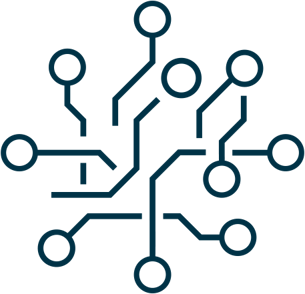- On this page
- Understanding Cybersecurity Risk in the Digital Age
- Defining Your Digital Assets and Exposure Footprint
- Key Cybersecurity Risks Affecting Singaporean Businesses
- The Risk Assessment Lifecycle: A Practical, Business-Aligned Framework
- Common Gaps in Cyber Risk Management and How to Avoid Them
- Strategic Approach to Cybersecurity Risk Mitigation
- Best Practices for Effective Cybersecurity Risk Management
- Conclusion
Understanding Cybersecurity Risk in the Digital Age
In 2023, Singapore’s digital economy made a significant impact, contributing S$113 billion to the nation's GDP and maintaining a steady 17.7% share. This sector has grown rapidly, with a compound annual growth rate (CAGR) of 11.2% from 2018 to 2023, almost double the pace of overall nominal GDP growth during the same period1. With revenues, customer engagement, and core operations increasingly dependent on digital infrastructure, any cyber-disruption poses a direct risk to revenue streams, regulatory compliance, and brand reputation.
At the same time, adversaries have sharpened their business models. Ransomware operators now combine encryption, data theft and public shaming, while “access-as-a-service” brokers sell footholds into Singapore-based networks to the highest bidder. The Monetary Authority of Singapore (MAS) and the Cyber Security Agency (CSA) have responded with progressively stricter Technology Risk Management (TRM) Guidelines, sectoral notices and an expanded licensing regime for critical-information-infrastructure operators.
For digital businesses, the message is clear: cybersecurity risk assessment (CRA) is no longer a compliance formality; it is a continuous, data-driven business process that protects revenue, uptime and customer trust.
Defining Your Digital Assets and Exposure Footprint
A modern enterprise’s “crown jewels” stretch far beyond on-prem servers:
- Data: Customer PII under the Personal Data Protection Act (PDPA), regulated financial records, proprietary algorithms.
- Applications & APIs: Web portals, mobile apps, microservices and the integration points that link them.
- Identities: Human users, service accounts, IoT devices, robotic process automation bots.
- Infrastructure: Multi-cloud resources, software-defined networks, legacy OT environments.
Hybrid work, aggressive SaaS adoption and IoT proliferation mean that each new business initiative enlarges the attack surface. Yet not every asset carries equal business criticality. A risk-aligned asset inventory tags systems with metrics such as revenue dependency, regulatory obligations and customer visibility so that scarce security budgets flow to controls that deliver measurable business value.
Key Cybersecurity Risks Affecting Singaporean Businesses

Data Breaches and Data Privacy
Data breaches present significant risks, with potential consequences ranging from financial penalties under Singapore's PDPA to severe reputational damage. Ensuring the confidentiality and integrity of personal and financial data is paramount. Recent incidents have demonstrated how quickly trust can erode when data privacy is compromised, emphasizing the need for stringent data handling practices and compliance measures.
Phishing and Social Engineering
Phishing remains the top initial-access vector2. Attackers exploit high-trust brands to harvest Singpass or corporate VPN credentials, then pivot laterally to privileged systems. Besides direct fraud, organisations suffer productivity loss as IT teams race to reset passwords, clean mailboxes and reassure clients.
Ransomware and Malware Attacks
Ransomware and malware represent critical threats capable of halting business operations, leading to significant financial loss. Recent cases in Singapore underscore the devastating operational disruptions ransomware can cause, accentuating the importance of robust security controls, comprehensive backup solutions, and a tested disaster recovery plan.
Third-Party Vendor Risks
Third-party vendors introduce additional risk layers through increased operational complexity. Businesses may underestimate vendor-related vulnerabilities. Conducting thorough vendor assessments and enforcing strict contractual cybersecurity requirements mitigate these external risks, reinforcing an organization's overall security posture. Collaborating with experienced cyber security service providers can help organisations conduct more rigorous vendor risk assessments and implement layered defenses tailored to their unique exposure.
The Risk Assessment Lifecycle: A Practical, Business-Aligned Framework
|
Phase |
Key Activities |
Business Questions Answered |
|
1. Identify |
Build and classify the asset register; map data flows; spotlight “crown-jewel” processes. |
“What do we need to protect, and why does it matter to the balance sheet?” |
|
2. Assess |
Evaluate threat likelihood, existing control strength, impact magnitude; use both qualitative heat maps and quantitative loss-expectancy models. |
“Where is the organisation most exposed today?” |
|
3. Prioritize |
Align risk scores with corporate risk appetite and strategic objectives; obtain executive sign-off on ‘high-critical’ list. |
“Which risks jeopardise revenue, uptime or compliance goals?” |
|
4. Mitigate |
Select controls—technical, process and contractual—that offer the best return on risk reduction (RoRR). Document risk-owner accountability. |
“How do we reduce residual risk to an acceptable level?” |
|
5. Monitor & Improve |
Set KPIs (mean-time-to-detect, patch latency, phishing resilience) and KRIs (failed log-ins, privileged access anomalies). Automate dashboards for board reporting. |
“Is the risk posture trending better or worse quarter over quarter?” |
This lifecycle aligns with ISO/IEC 27005 and the NIST Risk Management Framework, but the critical success factor is traceability to business outcomes: every control should map to a revenue-protection, service-uptime or regulatory-compliance objective, making it easier to justify budget and measure ROI.
Common Gaps in Cyber Risk Management and How to Avoid Them

- Identity & Data Blind Spots: Many CRA workshops focus on servers and firewalls yet neglect privileged-access abuse, SaaS misconfigurations, and “shadow” data lakes in analytics teams.
→ Fix: incorporate identity governance and data-loss-prevention tooling into scoping. - Risk Quantification Deficit: Decision makers struggle when risk statements read “high / medium / low” without monetary context.
→ Fix: adopt Factor Analysis of Information Risk (FAIR) or simple annualized loss expectancy models to convert qualitative ratings into dollar terms. - Siloed Ownership: Marketing owns customer portals, Finance owns SWIFT gateways, HR owns SaaS HRIS—yet IT bears sole accountability for breach prevention.
→ Fix: assign business-process owners as co-risk owners; integrate CRA outcomes into performance KPIs. - One-Off Assessments: Static spreadsheets completed once a year cannot keep pace with monthly cloud deployments.
→ Fix: embed risk checkpoints in agile sprints and CI/CD pipelines; treat CRA outputs as living data feeding automated dashboards.
Strategic Approach to Cybersecurity Risk Mitigation
Cyber risk mitigation is not a one-size-fits-all checklist—it’s a set of interlocking decisions that must align with business priorities, regulatory obligations, and digital ambition. Effective mitigation strategies must be risk-informed, value-justified, and operationally sustainable. Below are five core approaches, along with strategic guidance on applying them in modern enterprise environments.

1. Classify and Act: Accept, Avoid, Mitigate, or Transfer
Every identified cyber risk should be explicitly classified based on impact likelihood and strategic relevance:
- Accept: Low-impact, low-likelihood risks (e.g., old archive servers with non-sensitive data) can be documented with board-level visibility.
- Avoid: Redesign or eliminate risky processes (e.g., migrating away from unsupported legacy systems).
- Mitigate: Deploy controls where the cost-benefit ratio is favourable—e.g., DLP for PII protection, EDR for endpoint containment.
- Transfer: Use cyber-insurance where residual risks (e.g., ransomware downtime or extortion) remain unavoidable.
Risk classification forces prioritisation—vital when budgets and talent are constrained. It also builds accountability across business units by integrating risk into project funding and operational planning.
2. Adopt Zero-Trust Architecture (ZTA) – Trust Nothing, Verify Everything
Legacy perimeter-based models assume internal users and systems are inherently trustworthy. This is no longer valid. Zero-Trust shifts the paradigm:
- Verify every access attempt using adaptive MFA, device posture checks, and behavioural analytics.
- Apply least privilege across users, applications, APIs, and microservices—especially critical in hybrid and multi-cloud setups.
- Enforce segmentation by isolating workloads and enforcing east-west traffic controls within the network.
In Singapore, many organisations are already integrating Singpass for citizen identity verification and deploying passwordless MFA solutions for enterprise portals. This aligns with ZTA principles and improves both user experience and compliance assurance.
3. Implement Defence-in-Depth – No Single Point of Failure
A multilayered security posture ensures that even if one layer is breached, others will contain the impact. This is essential in real-world breaches, where initial access often precedes privilege escalation and data exfiltration.
Key layers include:
- Email Security: First line against phishing, spoofing, and malware payloads.
- Endpoint Detection and Response (EDR): Real-time detection of lateral movement, malware, and fileless attacks.
- Network Segmentation & Monitoring: Prevents attack propagation.
- Immutable Backups – Protects against ransomware encryption and tampering.
- Application Security (AppSec): Includes secure SDLC practices, SAST/DAST tools, and API gateway enforcement.
By integrating controls across the full kill chain (reconnaissance to exfiltration), organisations reduce dwell time, limit blast radius, and increase incident response agility. For organisations lacking internal expertise, adopting managed service provider cyber security solutions ensures that essential layers—from EDR to network monitoring—are continuously managed and updated.
4. Treat Third-Party Risk as First-Party Exposure
Third-party ecosystems—vendors, cloud platforms, logistics partners, even marketing agencies—are now among the top sources of cyber breaches. A modern third-party risk strategy includes:
- Vendor tiering: Prioritise based on data sensitivity, system integration depth, and business impact.
- Continuous monitoring: Use external risk scores or integrate with threat intel feeds.
- Contractual enforcement: Include right-to-audit, breach notification clauses, and mandatory compliance with CSA/MAS guidelines.
- Shared responsibility model: Clarify security ownership boundaries, especially for IaaS/PaaS/SaaS vendors.
Treat third-party access as privileged access—limit it, monitor it, and hold it to the same standards as internal users. Vendor security is now an extension of your own posture.
5. Transfer Risk Responsibly with Cyber Insurance and Incident Retainers
Cyber-insurance adoption in ASEAN is increasing, but misconceptions remain. While insurance can absorb financial shock, it cannot replace preventive controls or reputational safeguards.
Best practices for risk transfer include:
- Clear risk quantification: Define the potential financial impact of breaches (e.g., downtime cost/hour, regulatory fines).
- Evaluate exclusions carefully: Many policies exclude nation-state attacks or insider threats.
- Bundle with IR retainers: Maintain 24/7 access to incident response teams who can mobilise within hours.
- Use insurance metrics: Insurers often provide scoring tools, breach reports, and simulation workshops that benefit internal risk teams.
Risk transfer must complement—not replace—technical controls. Cyber-insurance works best when combined with incident readiness, stakeholder training, and board-level playbooks.
Best Practices for Effective Cybersecurity Risk Management
|
Domain |
Action Item |
Business Value |
|
Governance |
Board-approved cyber charter; quarterly KPI reporting |
Ensures funding aligns with risk appetite |
|
Awareness & Training |
Phishing simulations tailored to project teams; measure click-through reduction |
Cuts social-engineering risk & protects delivery timelines |
|
Technical Controls |
Enforce FIDO2/MFA for privileged access; immutability for backups |
Minimises ransomware blast radius |
|
Testing & Validation |
Annual red-team plus continuous purple-team “assume breach” drills |
Validates control efficacy before auditors do |
|
Third-Party Management |
Pre-contract security scorecard; PDPA data-processing clauses |
Reduces downstream breach liability |
|
Resilience |
4-hour Recovery Time Objective for critical workloads; exercise MAS “Alternate Site” requirements |
Maintains service-level commitments to customers |
Conclusion: From Reactive to Proactive Cybersecurity Posture
Cybersecurity risk assessment is not a one-time compliance task—it is a continuous, evolving process that must adapt alongside an organization’s changing digital landscape. Whether launching a Kubernetes migration, deploying an AI-powered customer service bot, or expanding into regional e-commerce marketplaces, every new initiative introduces potential vulnerabilities that must be proactively assessed. The objective is no longer just to satisfy an annual checklist, but to embed a mindset of risk awareness into every digital transformation effort—from cloud migration sprints to customer experience overhauls.
A modern Cybersecurity Risk Assessment program delivers three strategic payoffs:
- Revenue Protection: By focusing mitigation on systems that directly impact sales orders or payment flows, you safeguard top-line growth.
- Regulatory Confidence: Demonstrable alignment with PDPA, MAS TRM and CSA advisories reduces the likelihood and severity of fines and enforcement actions.
- Brand Resilience: Transparent risk dashboards and well-rehearsed incident response build stakeholder trust, turning security posture into a competitive differentiator.
The journey demands cross-functional commitment, continuous monitoring and data-driven prioritisation—but organisations that make the shift will not only defend their digital assets; they will unlock the confidence to innovate faster than less-prepared rivals.
Next Step: Schedule a quarterly, board-level CRA review that pairs technical findings with dollars-at-risk. Use that session to re-allocate budget toward controls with the highest return on risk reduction—and keep Singapore’s rapidly growing digital economy working for, not against, your strategic ambitions.
Book a Complimentary Consultation with Adnovum
To help you translate these insights into actionable outcomes, Adnovum offers a complimentary consultation tailored to your organisation’s cybersecurity priorities. Whether you need support refining your risk assessment framework, aligning with MAS TRM and CSA guidelines, or integrating Singpass for identity verification, our experts are ready to assist.
Schedule your free session today and take the next step toward a proactive and resilient cybersecurity posture.
Reference:
- IMDA. (2024). Architecting Singapore’s Digital Future.
- Cyber Security Agency of Singapore. (2023). The Rise of Mobile Malware.
📩 Sign up for our newsletter and gain access to exclusive executive insights and event invitations.





